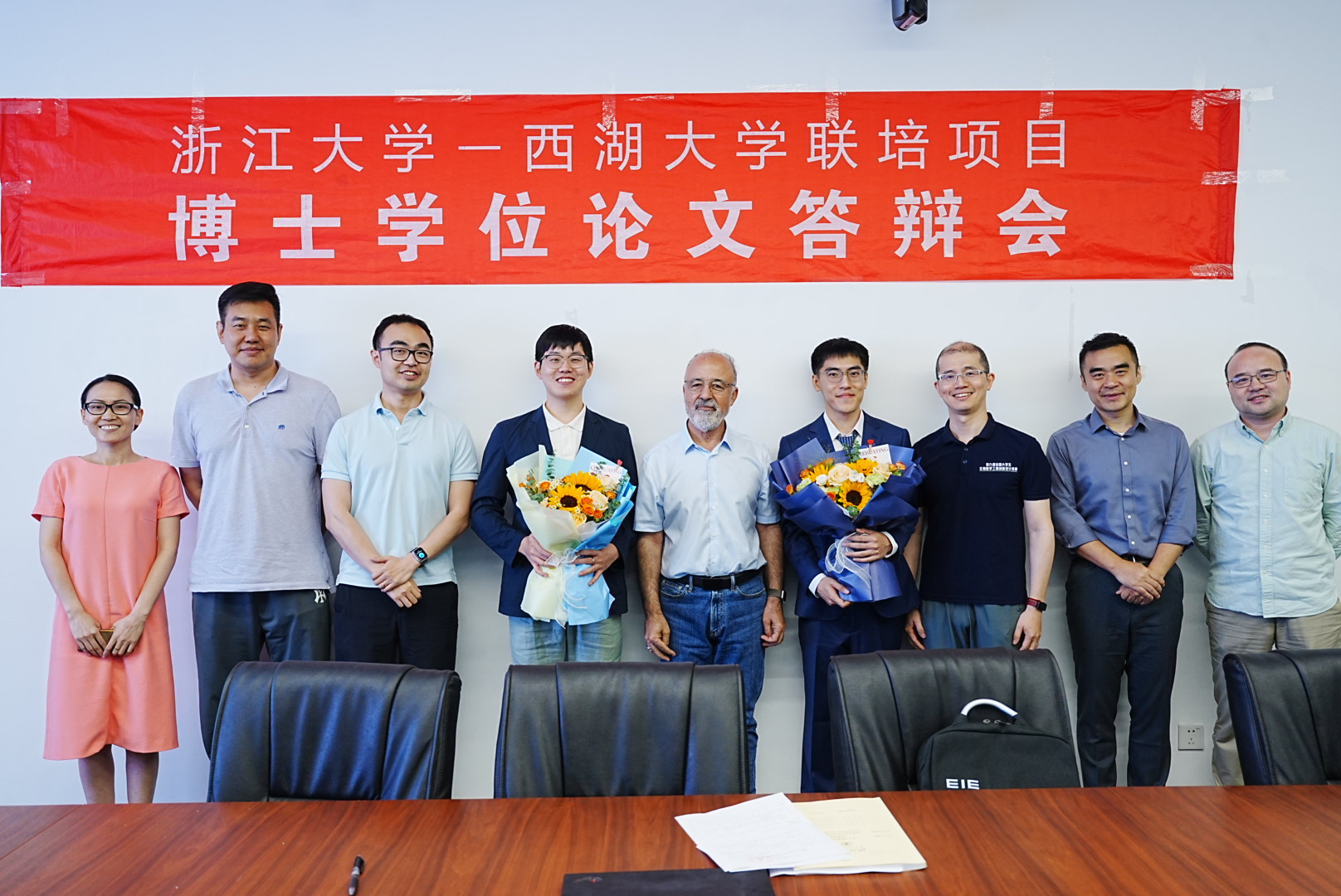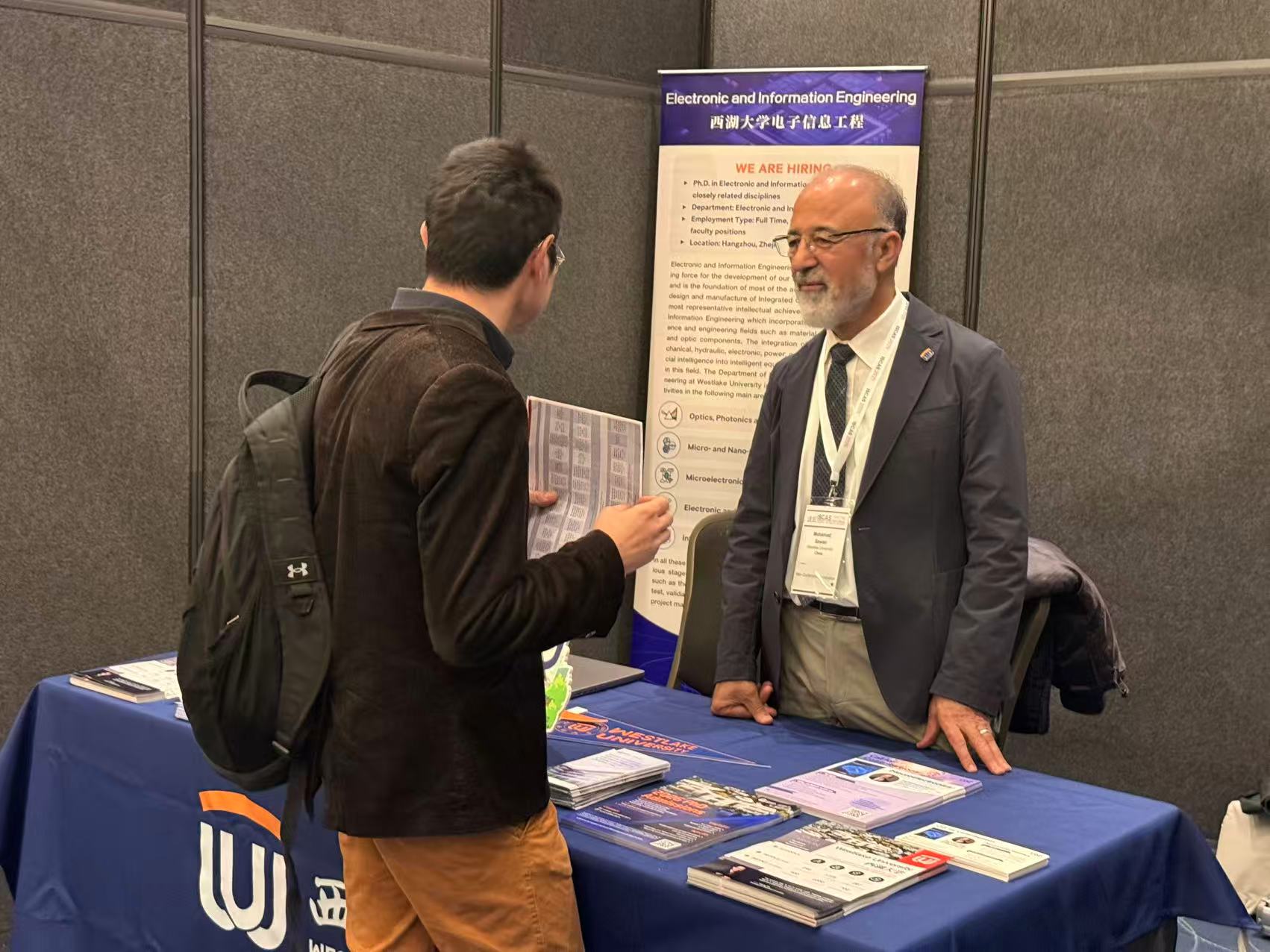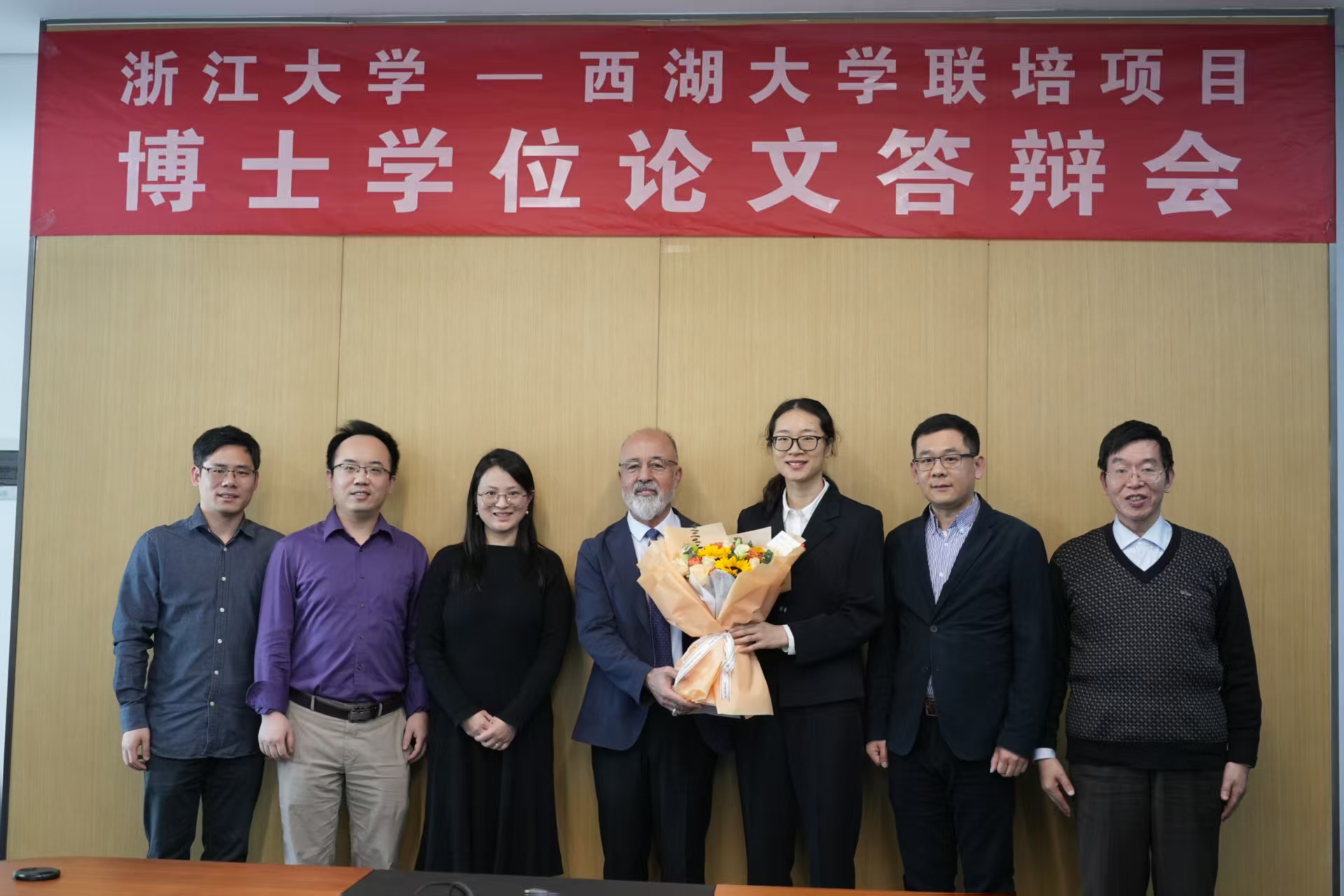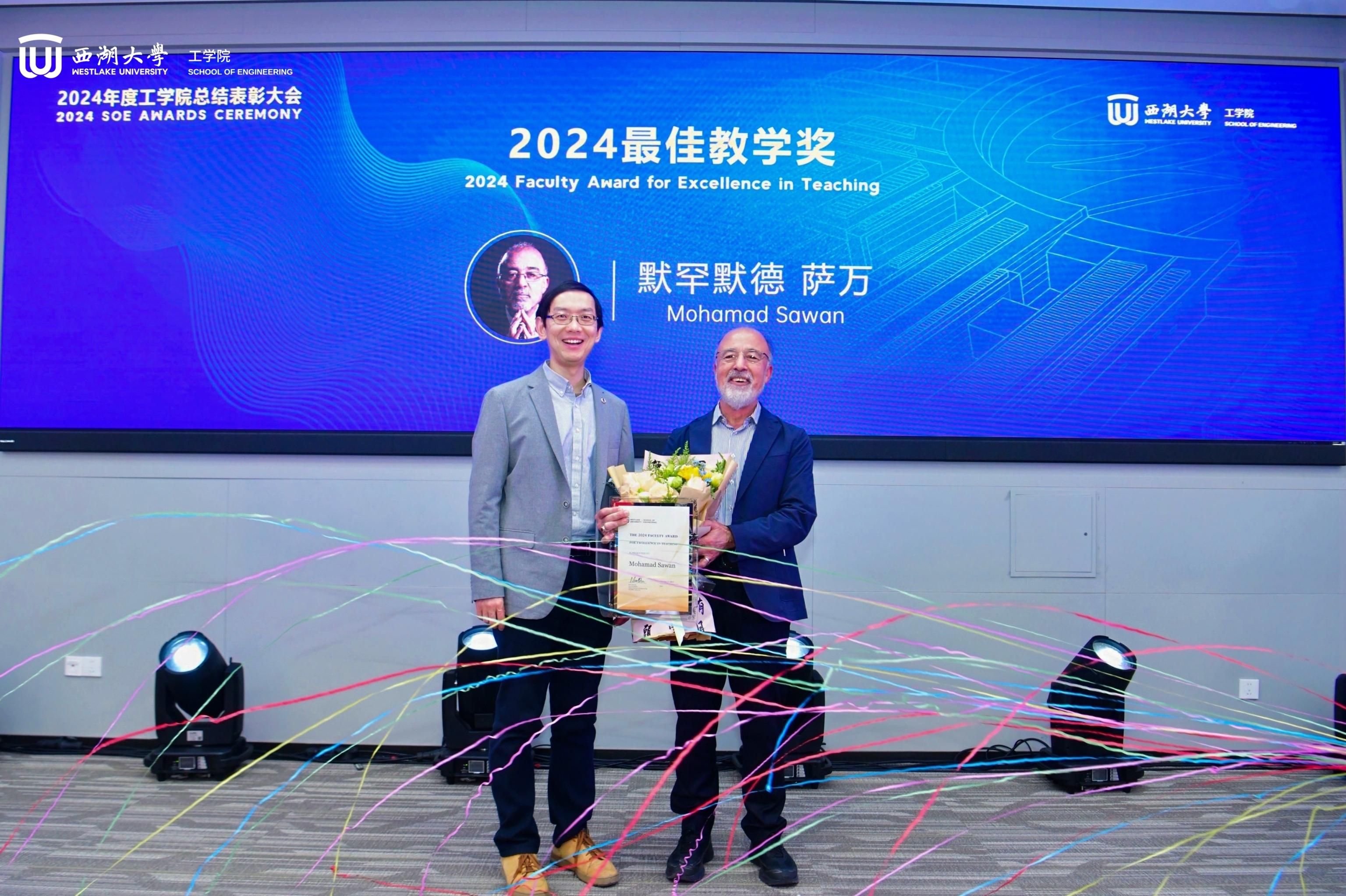The CenBRAIN Neurotech Center of Excellence from Westlake University made research presentations at the 47th IEEE EMBC conference in Copenhagen, DenmarK. Chair Professor Mohamad Sawan, Ph.D student Chengpeng Chai and visiting Postdoc Fellow Eva Guttmann-Flury represented Professor Mohamad Sawan's group at the premier biomedical engineering event.
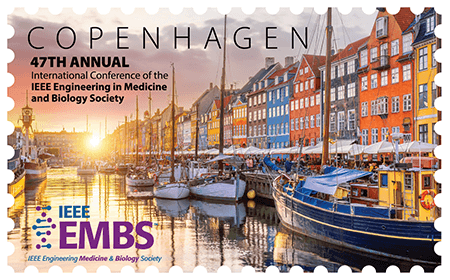
The IEEE Engineering in Medicine and Biology Conference (IEEE EMBC) is the annual international conference organized by the IEEE Engineering in Medicine and Biology Society (EMBS), representing the world's largest gathering in the field of biomedical engineering. This flagship event encompasses cutting-edge research and innovation in biomedical engineering, medical technology development, and clinical translation studies, representing one of the most prestigious academic gatherings in the field with exceptional scholarly reputation.
As a leading figure in the IEEE Engineering in Medicine and Biology Society (EMBS), Professor Mohamad Sawan serves as Associate Editor for both of the Society's flagship publications: IEEE Transactions on Biomedical Engineering (TBME) and IEEE Reviews in Biomedical Engineering. Additionally, he has been appointed Chair of the plenary committee of the 2026 IEEE EMBC in Toronto, Canada. In this capacity, Professor Sawan will collaborate with world-renowned experts to chart the future development of biomedical engineering, bringing new vitality and possibilities to this interdisciplinary field.
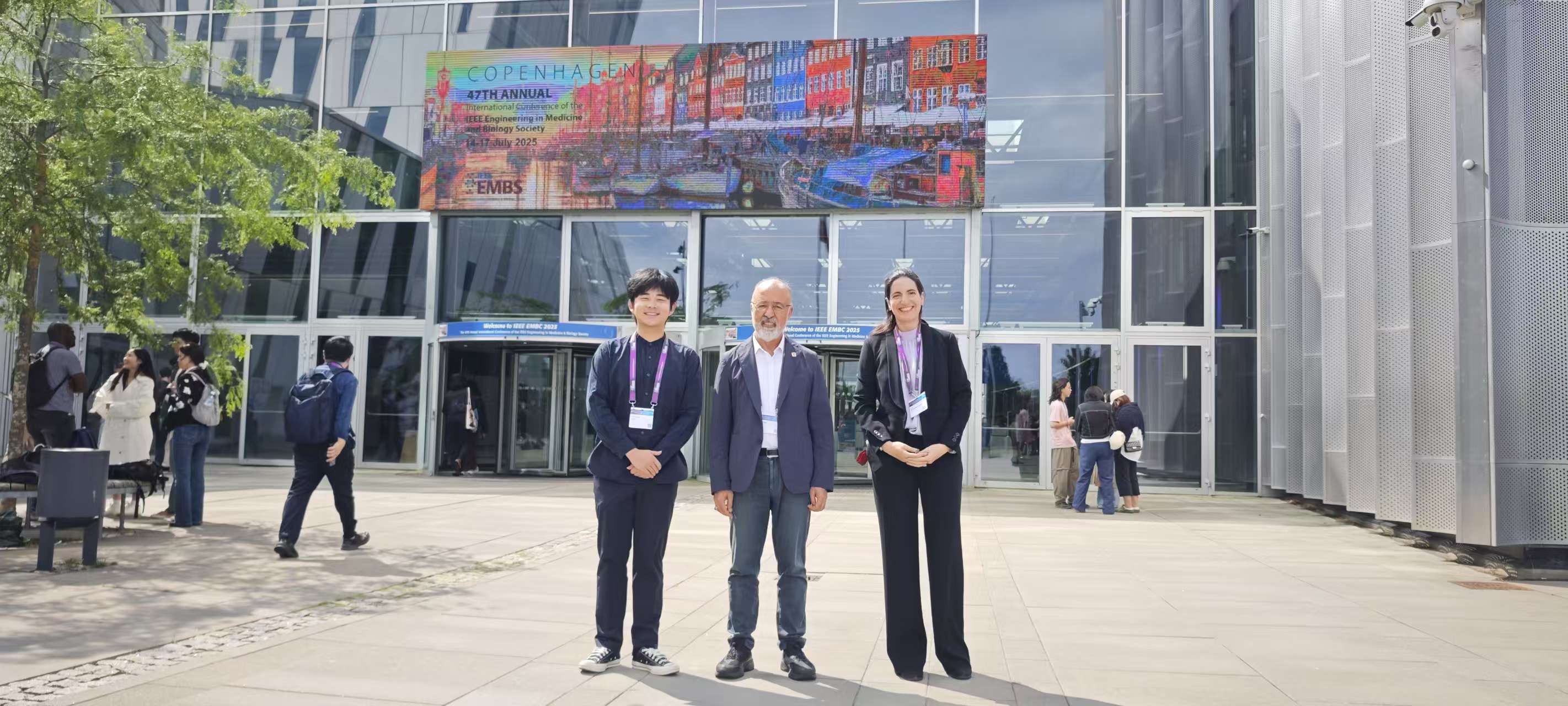
Prof. Mohamad Sawan with Chengpeng Chai and Dr. Eva Guttmann-Flury at IEEE EMBC'25
At the conference, the poster presented by Chengpeng Chai, showcased his latest research—“Non-invasive Photoacoustic Temperature Measurement and Processing with Correlation Coefficient (R²) Linearity of 0.99.” Dr. Eva Guttmann-Flury introduced her work “Automatic Blink-based Bad EEG channels Detection for BCI Applications”, which featured her previous research conducted at Shanghai Jiao Tong University.
It was Chengpeng's first time presenting abroad, and he came away with valuable insights: “Through this conference, I have gained a profound understanding of the tremendous potential of multimodal imaging systems in precision medicine and neuroscience. In particular, the integration of OPM and PAI is gradually moving from the lab toward wearable and practical applications, with promising prospects in chronic disease management and neural function monitoring. This experience not only broadened my academic horizons but also encouraged me to reflect on how to align my current research with global trends, aiming to enhance its originality and international impact.”
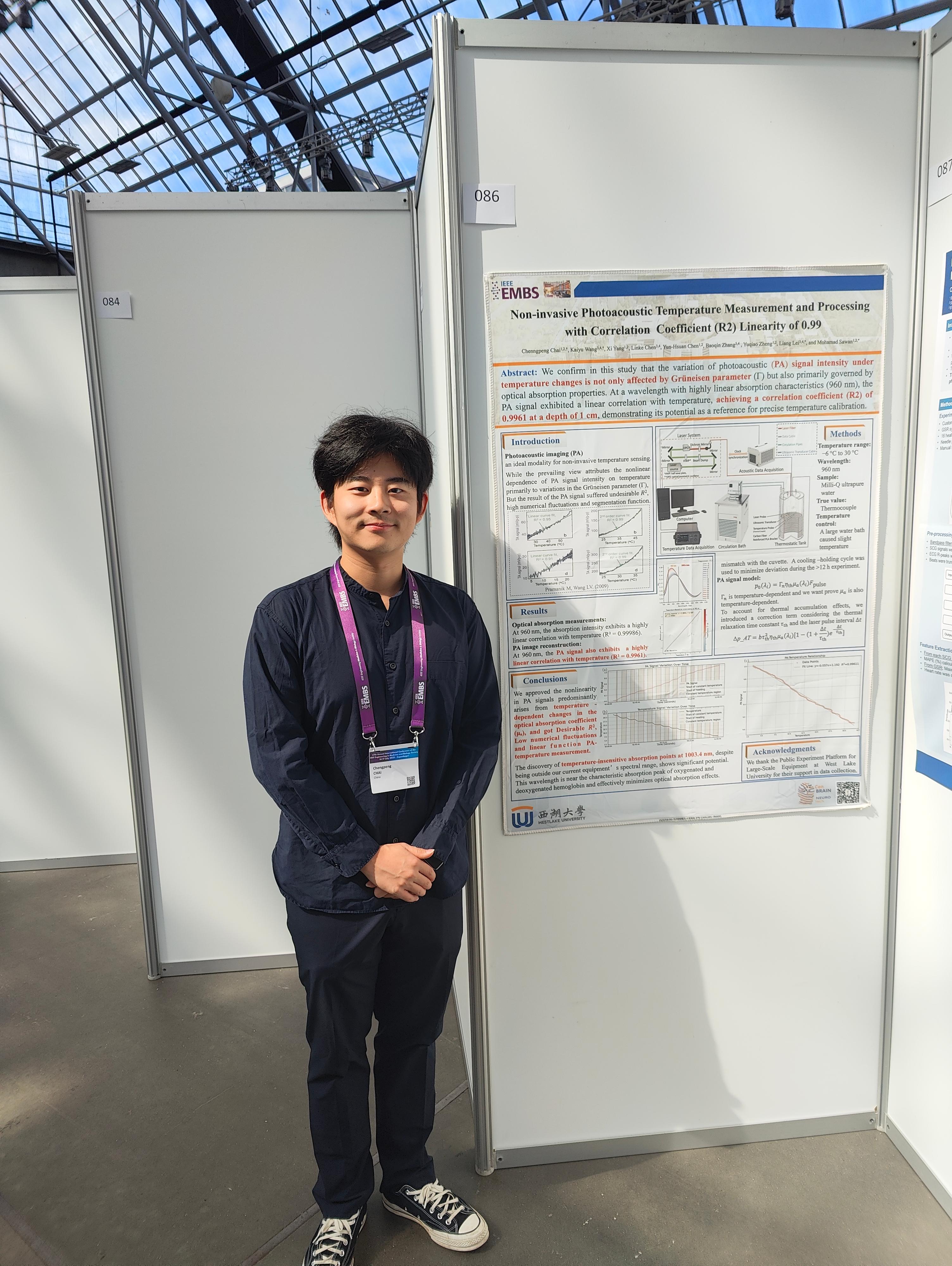
CHAI C., WANG K., YANG X., CHEN L., CHEN YH., ZHANG B., ZHENG Y., LEI L., SAWAN M., “Non-invasive Photoacoustic Temperature Measurement and Processing with Correlation Coefficient (R2) Linearity of 0.99”, IEEE-EMBCS, Copenhagen, Denmark, Jul. 2025
Photoacoustic (PA) combines the high contrast of optical imaging with the deep penetration of ultrasound imaging, making it an ideal non-invasive method for deep tissue imaging and temperature measurement. However, traditional attribute to that the nonlinearity of PA signal intensity with respect to temperature changes is primarily caused by the variation of the Grüneisen coefficient (Γ) contrarily, recent studies suggest that Γ remains linear in ultrapure water over typical experimental temperature ranges used in PA experiments, conflicting with previous conclusions. In this study we focus on ultrapure water over typical experimental temperature ranges used in PA experiments, conflicting with previous conclusions.
In this study we focus on ultrapure water with a linearly varying Γ in the temperature range of -6°C to 30°C. The dependence of optical absorption on temperature was found to be contingent upon the operational waveband, thereby informing the selection of the experimental wavelength. Results revealed that the variation of PA signal intensity is primarily governed by optical absorption properties, which are significantly influenced by wavelength. At a wavelength with highly linear absorption characteristics (960 nm), the PA signal exhibited a linear correlation with temperature, achieving a correlation coefficient (R2) of 0.9961 at a depth of 1 cm, demonstrating its potential as a reference for precise temperature calibration.



